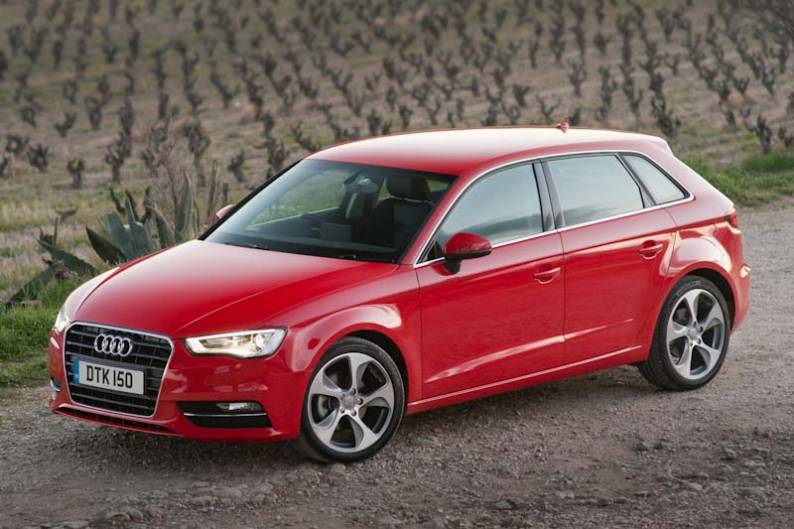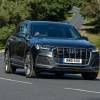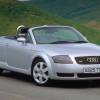
RAC sale – up to 33% off*
• Roadside cover from £5.29 a month†
• We get to most breakdowns in 60 mins or less
• Our patrols fix 4/5 breakdowns on the spot

By Jonathan Crouch
Introduction
We all like the idea of good things in sensibly sized packages. Perhaps that's why Audi's A3 has been so successful here, a compact car that goes large on quality, refinement and maturity. Especially in this third generation 'Type 8V' guise, where it was more sophisticated and efficient than ever before, particularly in the post-2016 updated form we look at here from a used car buyer's perspective. All of this was just as well, given that in this period, there were other Volkswagen Group products using many of the same ingredients and plenty of tempting high profile segment rivals. In other words, Audi knew that this enhanced MK3 model would have to work harder than ever to win sales. Fortunately for Ingolstadt, it proved to be well up to the task. By this period, the A3 range had been expanded to include saloon and Cabriolet models but it's the three-door hatch and the five-door Sportback variants that are our focus here.
Models
3dr/5dr Hatch (1.0 TFSI, 1.4 TFSI, 1.5 TFSI, 2.0 TFSI, 2.5 TFSI petrol / 1.6 TDI, 2.0 TDI) [SE, Sport, S line,S3, RS 3])
History
Back in 1996 when we first saw the A3 model line, the idea of being able to move a car up-market in class and appeal without increasing its size was new and rather different. Cynics dismissed it as a way of dressing up ordinary family hatches and charging a lot more for them. Customers though, loved the idea and by the time the second generation A3 arrived in 2003, BMW and Mercedes rivals had also arrived to swell the market. Initially, those two brands struggled to produce products good enough to overtake Audi and the result was that nearly a quarter of a million MK2 A3s were pounding global roads by the time this third generation 'Type 8V' model first arrived in the Autumn of 2012.
The Ingolstadt brand knew that this car needed to be good. By this time, both BMW's 1 Series and Mercedes' A-Class had developed into contenders with more widespread appeal and Lexus, Alfa Romeo and Volvo were all fielding fine premium compact alternatives. Audi's response was very Vorsprung Durch Tecknic, a subtle new suit disguising the revolution beneath the bodywork that was the first outing of the Volkswagen Group's all-new MQB platform. Stiffer and more cost-effective to produce, it promised better ride and handling and freed up funds for the installation of an interior with quality and technology previously unseen at this price point. The result, we were promised, would be the definitive compact premium car and the range was swiftly expanded beyond the initial three-door hatch body style to include a five-door 'Sportback' variant, then a Saloon, a Cabriolet and various hot hatch models.
It was to further cement this Audi's premium credentials that this much improved version of the third generation A3 model range was launched in the Summer of 2016. This was a significant update, given that the usual minor styling enhancements were accompanied by some genuine substance in terms of the changes made. There were two sophisticated new petrol engines, real advances in media connectivity and even the option of the fully digital 'Audi Virtual Cockpit' instrument binnacle from the brand's TT sportscar.
The volume 1.4 TFSI petrol engine was replaced by a 1.5 TFSI unit in 2017, the same year that Audi launched an updated version of the top RS 3 hot hatch variant, with power uprated to 400PS. This A3 range in this updated MK3 form sold until the end of 2019, when it was replaced by an all-new fourth generation design.
What You Get
The post-2016-era changes made to this revised 'Type 8V' model are primarily focused on the front end, where the familiar Singleframe grille was made wider and more sharply contoured. The headlamps that flanked it we also restyled to be flatter and more distinctive than before, with more modern xenon lighting replacing the old halogen units.
Take a seat inside and the cabin quality you'll find there really sets this car apart at its price point amongst models from this era, with a really premium feeling of quality and class. The defining feature of the dash remains the prominent four air vents, styled to look like miniature jet engines and made up of no fewer than thirty individual parts including bright metal outer rings that are shaped for perfect grip. The two central vents sit above a smarter panel of ventilation controls that gained a piano black finish as part of the mid-life update, plus there was a restyled three-spoke leather-trimmed steering wheel. It's what you can view through this though, that probably represented the greatest change made as part of the 2016 package of update improvements - the optional 'Audi Virtual Cockpit'. Original buyers had to pay extra for this but if you find a car that has it, you'll get yourself a real cabin talking point, the set-up replacing the entire instrument binnacle with a 12.3-inch colour TFT screen that's fully digital and customisable, with smart 3D graphics and highly detailed effects.
Anything this set-up can't tell you will almost certainly be covered by the slimline MMI infotainment display that glides out from the top of the dashboard to deal with audio, informational and phone-orientated functions you can prompt via a chrome-edged rotary controller in front of the gearstick. The retracting screen is 7-inches in size across the range and with these updated models, works with the useful 'Audi smartphone interface' that, through 'Apple Car Play' and 'Android Auto' smartphone connectivity, allows everything you access on your handset to be duplicated onto the slide-out monitor.
If you're going to be regularly using the rear compartment in your A3, you really need to have opted for the Sportback bodystyle, not only because of its two extra doors but also because this variant sits on a wheelbase that's 35mm longer than the three-door. As for the boot, well it's 380-litres if you go for this slightly lengthier Sportback variant (as opposed to 365-litres with a three-door A3).
What You Pay
Please fill in the form here for an exact up-to-date information.
What to Look For
Most owners in our survey seemed happy. The most reported faults related to problems with the alarm system and the central locking. And issues with rattly interior trim and non-engine electricals. Look out for bodywork scrapes and kerb damage to larger-spec alloy wheels. We've had some reports of issues with wear to the side bolsters of the leather seats, as well as squeaking front brake pads, so it's worth looking out for both of those. There were a few issues with the car's infotainment system, with phones not connecting properly and flickering screens being the main problem. Rattling parcel shelves and buzzing interior trims were also reported. The DSG automatic gearbox should be checked to make sure it's had a regular oil and filter change, as should the quattro four-wheel-drive system.
Many A3s will have been company or lease cars and, as a result, you should check the condition of the bodywork carefully. The high-quality fit and finish of an A3 also makes it an ideal candidate for clocking, so ensure the history is absolutely verified. There were two manufacturer recalls on the A3 in this period. Check that any necessary remedial work has been carried out on affected cars. On some A3s produced in August 2017, there was a problem with the rear hub carrier not being manufactured to the correct standard, so in extreme circumstances, the car could lose a rear wheel. A recall was issued to replace the carriers on affected cars. Poor welds attaching the rear head restraint to the rear backrest of some A3s made between May and September 2018 posed a safety issue. Affected cars had to have the whole backrest replaced.
Replacement Parts
(approx based on a 2016 A3 2.0 TDI 150PS - Ex Vat) An air filter costs in the £10-£19 bracket. An oil filter costs in the £7-£11 bracket. A fuel filter is around £13-£29. Front brake pads sit in the £27 to £63 bracket for a set; for a rear set, it's in the £32 to £54 bracket. Front brake discs sit in the £50-£72 bracket; for a rear pair, you're looking at the £48-£80 bracket. A thermostat costs around £13-£30 and a water pump is around £102. A radiator is around £150. And a starter motor is in the £110-£160 bracket.
On the Road
Audi significantly improved the TFSI petrol engine line-up with this revised post-2016 version of the third generation A3 model, adding in a 115PS three cylinder 1.0-litre unit at the foot of the range and a much improved 2.0-litre 190PS powerplant at the top of it. In between these two options, the clever 1.4-litre 'Cylinder on Demand' derivative that can work with ether two or four cylinders depending on throttle load was carried over from before, but had its output boosted by 10PS to 150PS. This was quickly replaced by a 1.5 TFSI unit with the same output. It's also worth mentioning that with this updated Type 8V A3, all these petrol engines were able to work with a freshly developed 7-speed S tronic auto gearbox that was available as an option. Further up the petrol range, the hot hatch S3 variant also used the new 2.0-litre TFSI engine, but in uprated 310PS form, mating it to a revised quattro 4WD system that was quicker-reacting and delivered a more enthusiast-orientated rear-driven bias.
Most A3 buyers though, continued to want a diesel, possibly the 110PS 1.6-litre unit but more probably the 150PS 2.0-litre TDI powerplant most selected. These engines were upgraded to Euro6 status as part of the 2016-era updates but otherwise were carried over from the original model line-up. With the 2.0-litre TDI unit, there was the option of quattro 4WD, something you have to have if you opt for this powerplant in its top 184PS state of tune. As for handling, well the light, stiff MQB chassis makes this car feel quite agile and you can vary its handling responses if you get yourself an example fitted with the 'Audi drive select' vehicle dynamics system. Ultimately though, the key attributes of mainstream A3 models lie in their supple standards of ride and exemplary refinement. As a result, this A3 retains a continuing ability to bring a luxury segment-style driving experience to a sector based around more affordably-priced compact models.
Overall
In the search for a compact car that's also a premium purchase, there are probably more charismatic choices than this improved version of the MK3 Audi A3. But we think there are few better ones. Light in bulk, heavy in technology, it's a logical evolution of a breed that's long been one of Britain's favourite company cars. This improved version might look little different at first glance from the original version of the MK3 model but it'll feel so if you get a car whose original owner specified the clever 'Virtual Cockpit' technology and get to grips with the enhanced media connectivity. We also think the introduction of 1.0-litre 3 cylinder petrol power at the foot of the range was even more significant. If your annual mileage is low, you shouldn't automatically opt for a TDI variant without considering it.
By pioneering the premium compact hatch segment with original versions of this model, Audi in many ways redefined the meaning of automotive luxury, democratising it without the desirability being diluted. Other brands claim to have done the same of course and many have used a few more visual or dynamic fireworks to grab the attention. Ingolstadt though, doesn't think this A3 needs them and legions of loyal global buyers seem to agree. Cool, class-less and clever, it remains desirably definitive.







